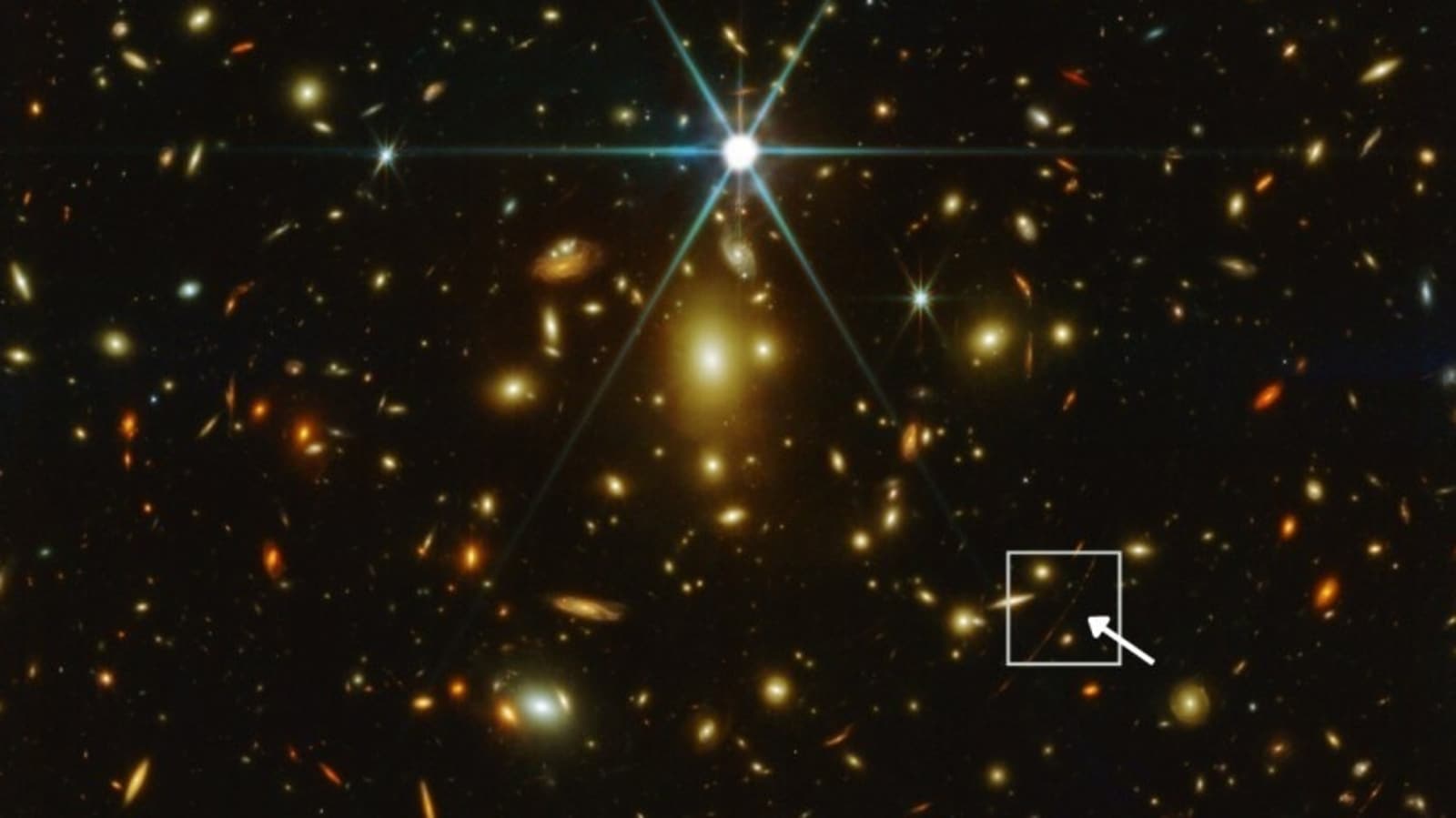NASA James Webb Space Telescope captures the image of the most distant star in the Universe named Earendel
Named Earendel, the most distant star known in the universe was recently captured by the NASA James Webb Space telescope.
The NASA James Webb Space Telescope has been on a roll ever since it began sending images last month. After creating history by taking the deepest image of the universe and snapping a shot of the farthest galaxy in the universe, now it has completed yet another feat. This time, the JWST has captured the image of the most distant star known in the Universe. This star was first discovered earlier this year when the NASA Hubble Space Telescope managed to capture it in an image. But that image was barely visible. In comparison, the JWST image showcases the faint red glow of the star and the starry trail on which it lies. Read on to know more about the star.
The most distant star in the universe has been named Earendel, after the half-elven seafarer characters from the J.R.R. Tolkien’s ‘Lord of the Rings’ series. Officially, the star is known by a more technical name of WHL0137-LS. This image was shared on Tuesday, August 2, by the Cosmic Spring JWST Twitter account, which is run by astronomers who post images from JWST. In the tweet, Earendel can be seen as a tiny red speck at the lower right side of the image.
Posting the image, the account wrote, “We’re excited to share the first JWST image of Earendel, the most distant star known in our universe, lensed and magnified by a massive galaxy cluster. It was observed Saturday by JWST program 2282”.
NASA James Webb Space Telescope captures the most distant star in the Universe
The astronomers used a cool trick known as gravitational lensing to spot the star. Essentially, massive celestial bodies like galaxies and black holes bend light emitting from the objects behind them due to its gravitational fields. When this light from farther stars passes through these massive celestial objects, it acts like it is passing through the lens of a telescope and becomes magnified. This way, even the smallest objects which might have been missed by the telescope can be captured. Gravitational lensing increases the capabilities of space telescopes.
This is the reason Earendel, which is located 28 billion light years away, got captured by both Hubble and JWST. While not much is known about this elusive star, we do know that it lies in the constellation of Cetus and it is believed that the light it emits comes roughly 900 million years after the Big Bang. Scientists theorize that Earendel is likely to have between 50 and 100 solar masses.
For all the latest Technology News Click Here

